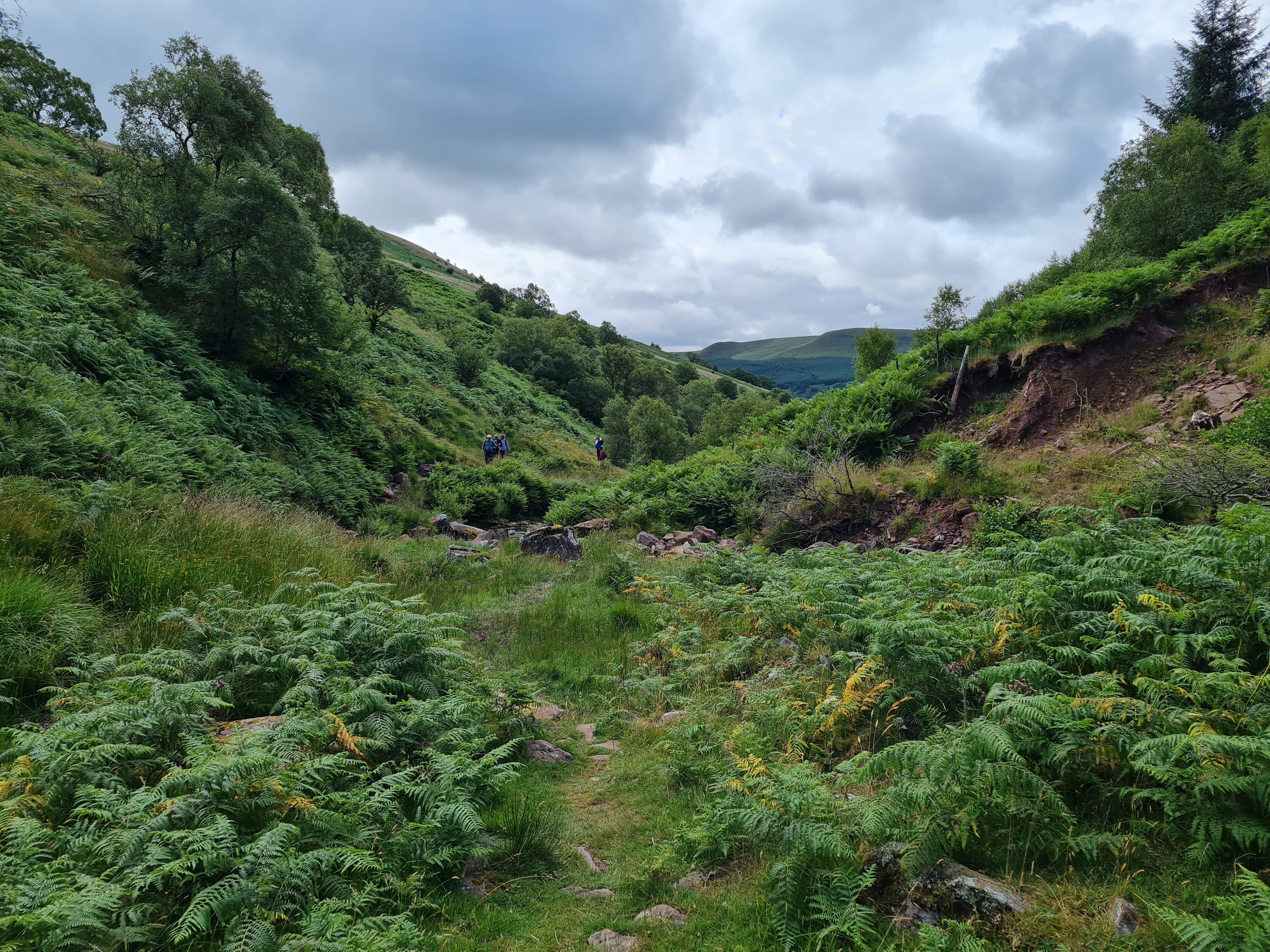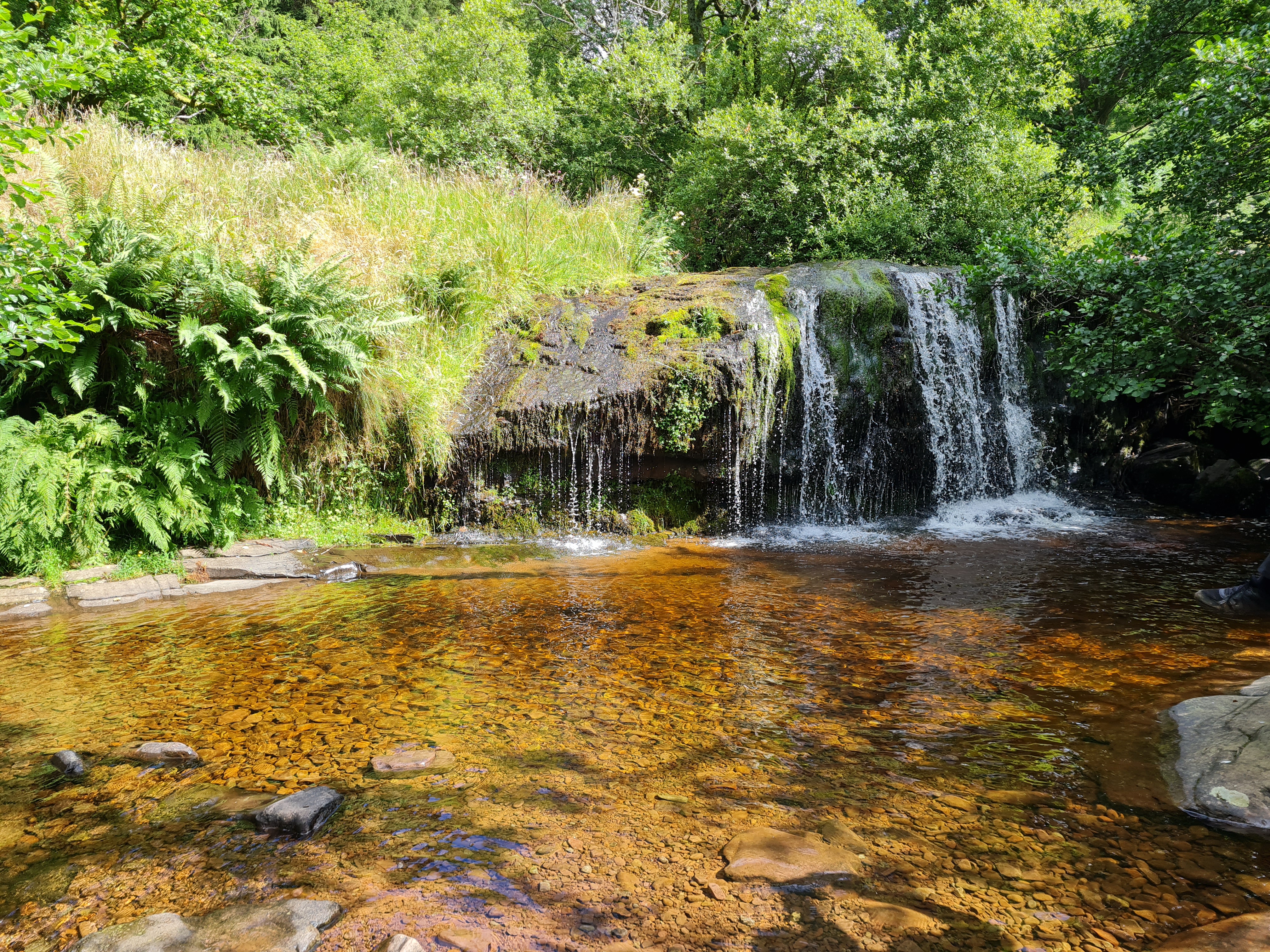Dr Richard Stone, Senior Lecturer in Early Modern History (University of Bristol), reflects on the recent CEH field trip to the Brecon Beacons.
If there was one thing the Centre for Environmental Humanities field trip to the Brecon Beacons in July 2022 brought home to me, it’s how each of us perceives the landscape in a different way, and how in turn our perception is shaped by interaction with each other.
The Dipper which flew up the river alongside the Blaen y Glyn waterfall trail is a perfect example of this. After 25 years of birdwatching, I took one look at the river valley and was expecting to see dippers there. It was a perfect habitat, with clean fast running water and not too much disturbance. I heard the call before I saw the bird, and was able to turn and point it out to others in the party before the portly little dart flashed round the bend and out of sight. The shape, sound, and behaviour of Dippers are all logged in my mind, so this brief glimpse was enough for me to know what I was looking at, to be aware of this aspect of the landscape. To me, this was a Dipper valley.

Perhaps most who walk that way, however, would not encounter the Dipper. Their ears might register its call, and eyes observe a bird shape fly past, but it would not break the surface of their consciousness. It was my knowledge of the Dipper and its behaviour, and the fact that I am always scanning the landscape for birds that bought it to the attention of the rest of the group, and meant that they too saw a Dipper and learned a little of its story.
Each of us views a landscape in a different way, and in turn draws out different features. Many of our group were wild swimmers, assessing the river not for its potential birdlife, but for pools which might be deep, clear, and accessible enough to bathe. While they did not pull me into the water and fully into their world, through sharing a walk with them I too learned to view the landscape through a different lens, and to see a layer of its nature which would normally pass me by. To me, this was now also a swimmers’ river.

I learned most about the way a landscape can be read, however, from our guide Paul as we walked from the Brecon Beacons National Park Visitor Centre. The way he recognised and understood the plants of the bogs and moor was perhaps similar to the way I was seeing their birds. But it was the way he could point to a parcel of land or a clump of trees and tell its story that really hit me, explaining what had shaped it from deep geological time up to what he himself had witnessed over the last twenty years. He knew why that patch of trees was there, and how it would dry out the bog over the next 500 or so years. And he knew that the patch of lighter green at the edge of the wet ground was where the peat cutters had turned their carts in the nineteenth century. Clearly some of this was knowledge and training as an environmental scientist, but there was something else there too. This was the kind of seeing, the kind of knowing, which can only be obtained by spending decades observing, shaping, and living with a single place. It was a privilege to be granted a glimpse of Paul’s Brecon Beacons.
Follow Richard on twitter @Dr_RGStone

